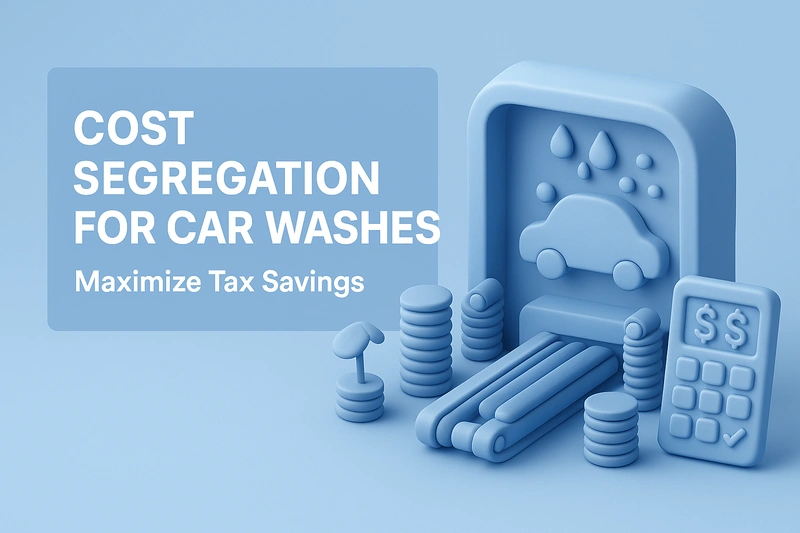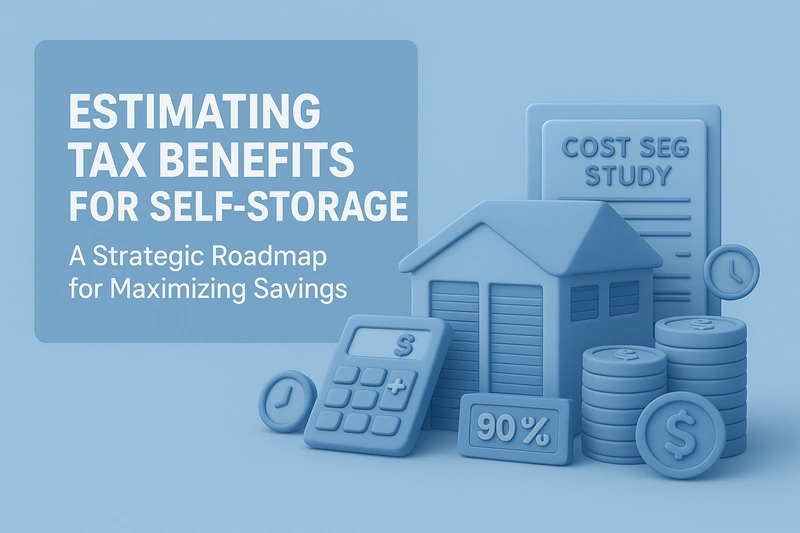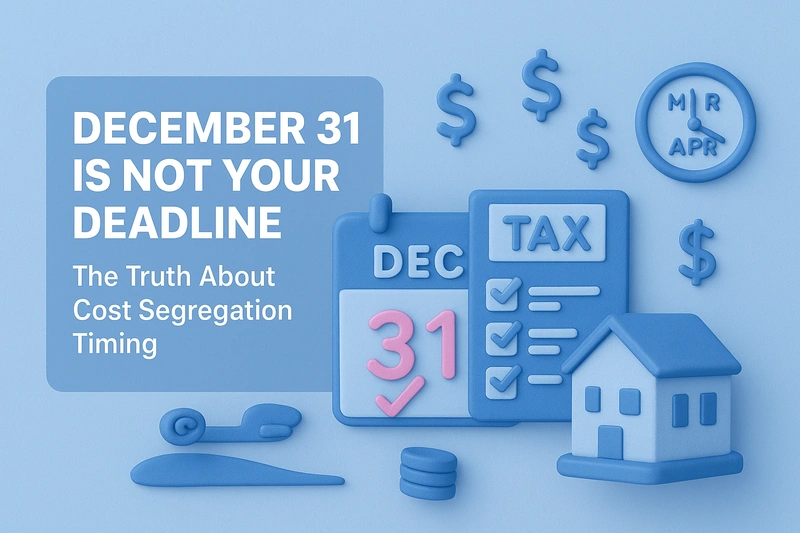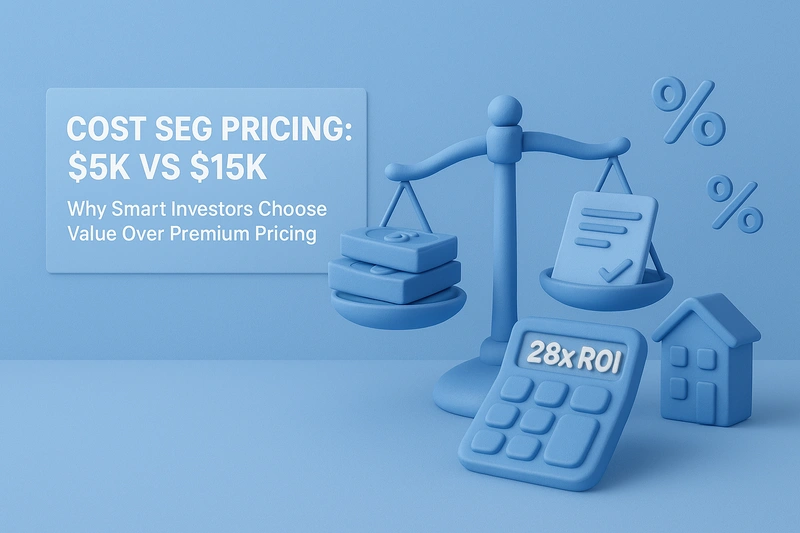Not long ago, I was advising the owner of a newly built express tunnel car wash who couldn’t understand why their tax bill felt so out of line with expectations. They had invested heavily in high-efficiency dryers, a water reclamation system, and extensive site paving, but their accountant had categorized nearly everything under a 39-year schedule.
As I walked them through the property, I pointed out that many of these assets (equipment, plumbing tied directly to car wash operations, even portions of the electrical systems) qualified for much shorter depreciation lives. By the time we finished reviewing the details, I showed them how a cost segregation study could generate more than $400,000 in accelerated depreciation in the very first year.
The real win wasn’t just the tax savings; it was the freedom to redirect that cash into marketing and an additional vacuum station that brought even more customers through the wash.
Why Car Washes Are Particularly Suited for Cost Segregation
Car washes are unlike most commercial properties because so much of the investment goes into specialized infrastructure rather than the building itself. Conveyors, dryers, vacuum stations, plumbing, and water reclamation systems all qualify for shorter depreciation lives of 5, 7, or 15 years. Even exterior work like paving, curbing, and drainage can often be accelerated.
Without a study, these assets are typically lumped into the standard 39-year schedule, which delays deductions for decades. With cost segregation, however, 20% to 40% of total costs can often be shifted forward.
For example, on a $3 million build-out, $900,000 to $1.2 million might be reclassified into shorter lives. When bonus depreciation is applied, a large share of that can be deducted in year one, putting hundreds of thousands of dollars back into the owner’s pocket at the exact time growth capital is most needed.
What a Cost Segregation Study Looks Like
A cost segregation study isn’t just a review of tax records; it’s a detailed engineering and accounting analysis of a property that identifies which components qualify for shorter depreciation lives. It’s called a study because it requires a systematic, evidence-based approach: examining blueprints, construction costs, and the physical property itself to build a defensible report that will stand up to IRS scrutiny.
1. Engineering-led asset identification
A qualified engineer reviews blueprints, site plans, and physical inspections to break down the property into components that qualify for shorter depreciation schedules.
2. Classification into IRS asset lives
Assets are then reclassified into 5-year, 7-year, 15-year, or 39-year categories depending on their use and nature. For car washes, this often means moving large portions of the build-out into shorter classes.
3. Bonus depreciation and catch-up opportunities
Current tax law allows certain assets to be expensed more quickly through bonus depreciation. Even if a car wash has been in service for years, a “look-back” or catch-up study can apply retroactive deductions in a single year without amending past returns.
Examples That Illustrate the Impact
Express Tunnel Car Wash (Newly Built, $4.7 Million Project)
Imagine a 3,800-square-foot express tunnel car wash built for just under $5 million. If all costs are depreciated over 39 years, annual deductions are limited. But through a cost segregation study, roughly $1.6 million of that investment (conveyors, dryers, plumbing, and paving) could be shifted into 5-, 7-, and 15-year property.
With bonus depreciation, the owner might claim over $1 million in deductions during the first year, giving them the cash flow to fund marketing and expand vacuum stations.
Older Self-Service Wash ($2.3 Million Acquisition)
Consider a six-bay self-service wash acquired for $2.3 million. Two years later, a look-back study could uncover nearly $700,000 in assets eligible for shorter depreciation schedules, including equipment and site improvements.
The result might be a one-time catch-up deduction of around $250,000 in the current year, a boost that could cover debt service or finance a round of equipment upgrades.
Portfolio of Three Car Washes (9 Million Aggregate Cost)
Now, take an investor purchasing three express washes at a combined $9 million. A study might reclassify $3 million into shorter asset lives, generating first-year deductions of $1.2 million. Instead of spreading those savings thinly across four decades, the investor frees up enough capital to leverage financing for a fourth site within 18 months.
Questions Car Wash Owners Often Ask
“My car wash has been open for several years. Did I miss the chance to benefit from cost segregation?”
This is how owners usually phrase it. They’re worried that because they didn’t do a study at the time of construction or purchase, the window has closed. The answer is no: you can still capture missed depreciation through what’s called a change in accounting method.
With IRS Form 3115, you take a one-time “catch-up” deduction in the current year. That often means six or seven figures of deductions hitting your return all at once, even if your business has been operating for years.
“My CPA already handles depreciation. Why would I need a separate cost segregation study?”
This comes up constantly. A CPA can manage depreciation schedules, but most aren’t engineers. Without a study, they’re relying on broad IRS class lives and can’t dig into the technical details of plumbing runs, water treatment systems, or specialized electrical systems that qualify for shorter lives.
A cost segregation study is what bridges that gap. It gives the CPA a defensible, engineering-backed report they can plug directly into the return, often unlocking hundreds of thousands of dollars in deductions that a standard approach misses.
“What happens if the IRS audits my return after I’ve taken these deductions?”
Owners are often cautious here, and rightly so. The good news is that a properly prepared study is designed to withstand scrutiny. It doesn’t rely on “aggressive” assumptions. It’s based on construction records, invoices, and engineering analysis tied to IRS asset classifications.
In practice, when an audit happens, the study serves as the evidence. If it’s done by a qualified provider, you’re not only compliant, you’re on solid ground. The risk isn’t in doing a study. The real risk is leaving money on the table.
Ready to Polish Your Cash Flow?
Cost segregation for car washes is a powerful financial strategy that frees up capital for reinvestment, debt service, or expansion. If you own a car wash or plan to acquire one, now is the time to act, especially with bonus depreciation declining.
To explore exactly how this applies to your property, connect with R.E. Cost Seg for a tailored study that maximizes savings and positions your investment for long-term success.






